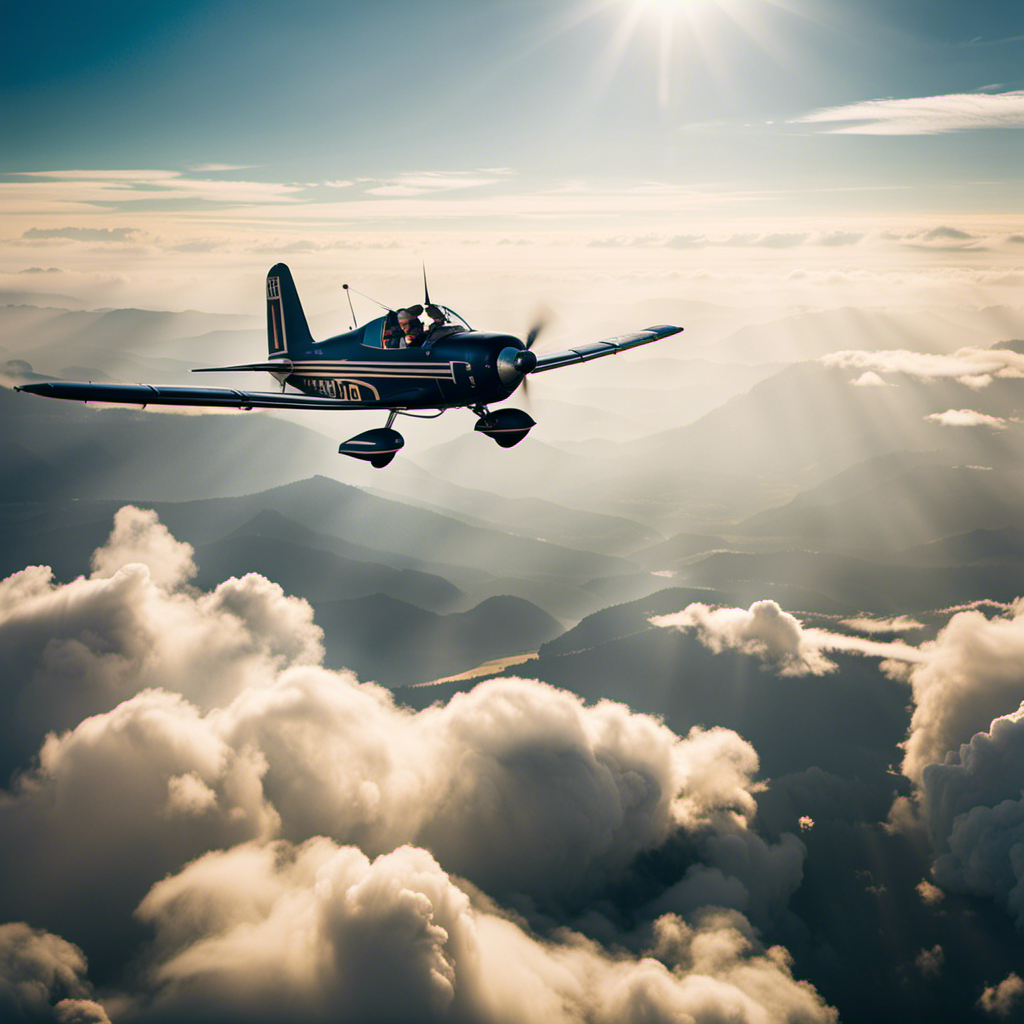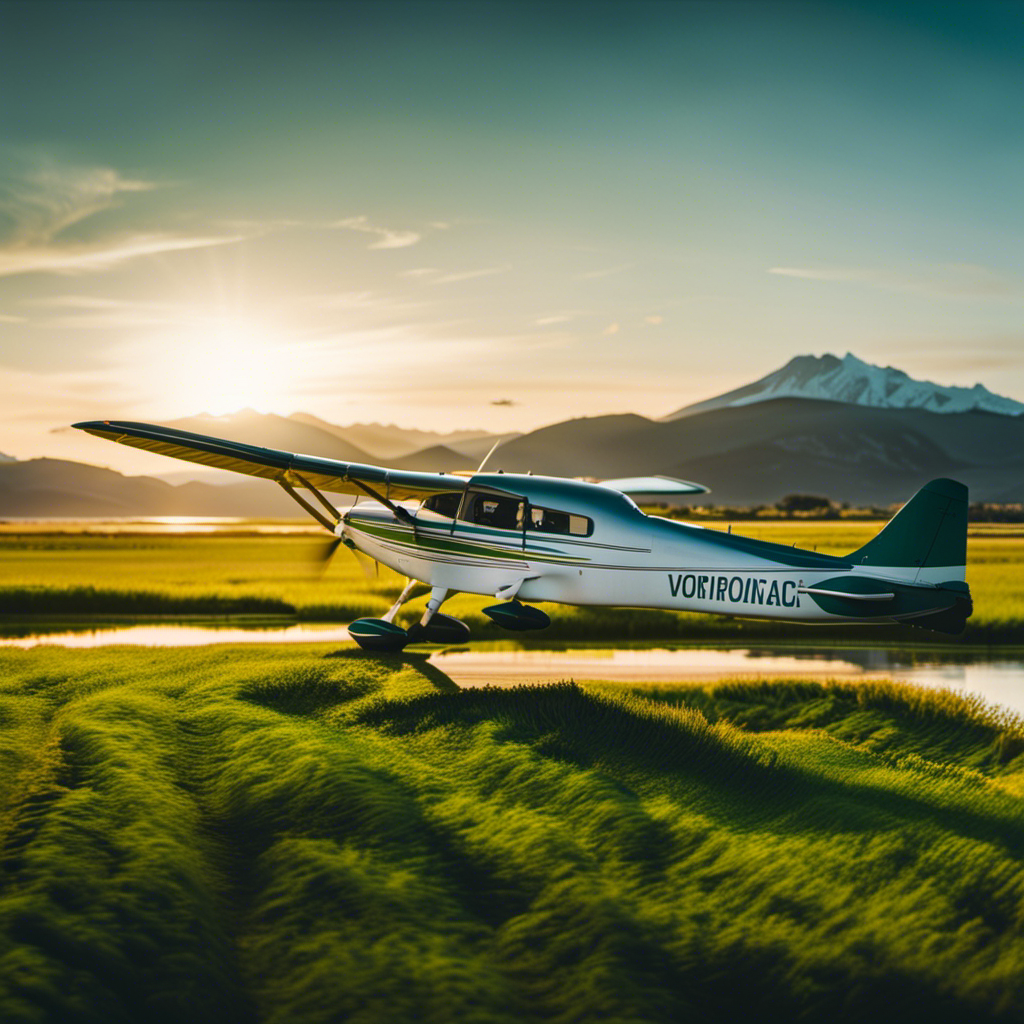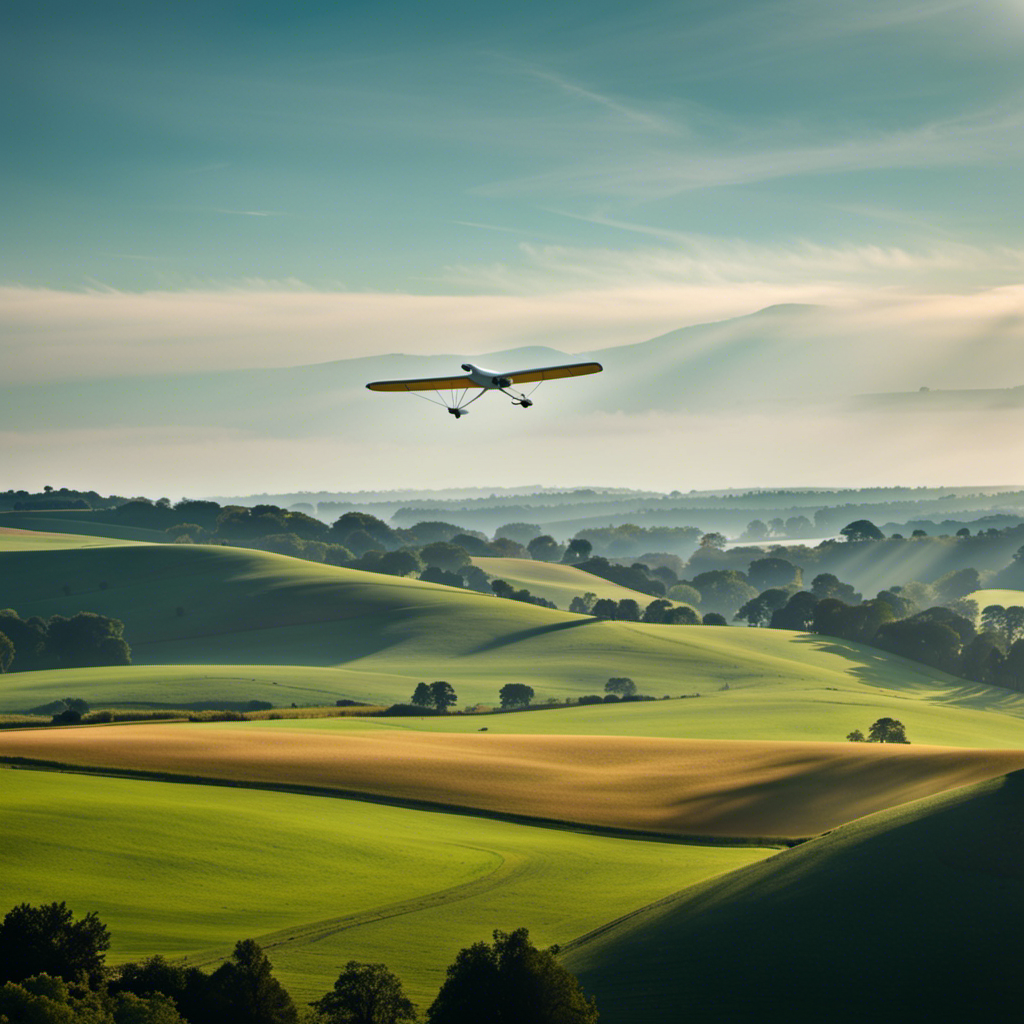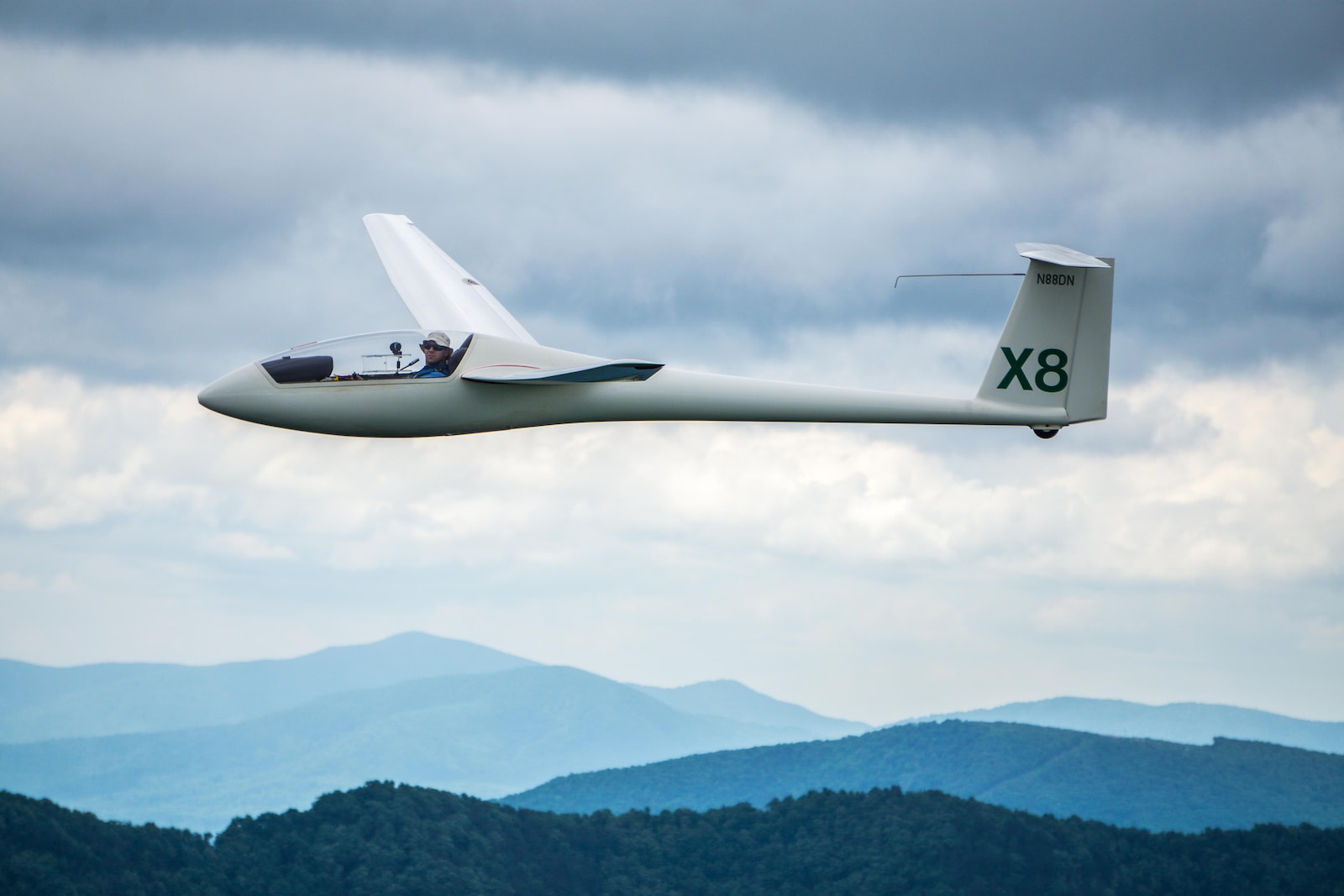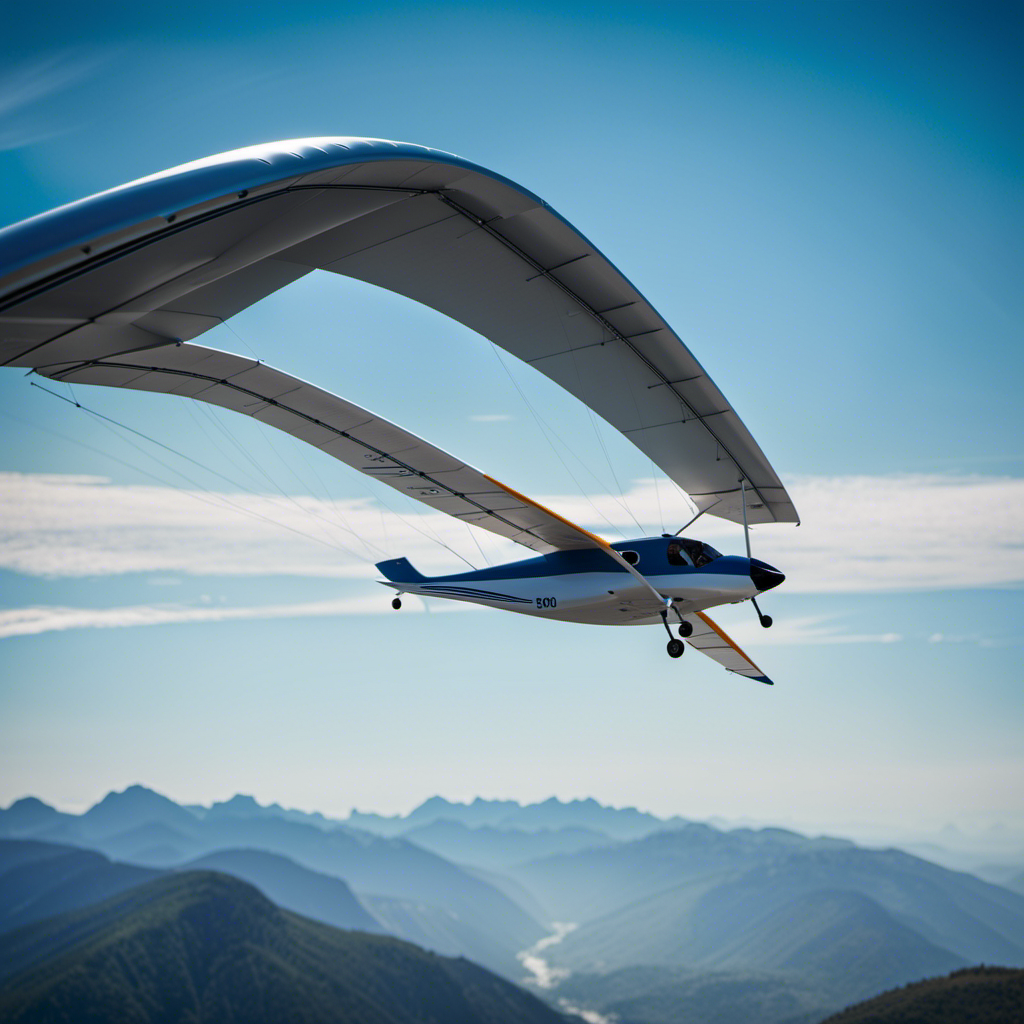As I ascend into the heavens, my aspirations reach new heights like never before. The quest for obtaining a pilot’s license is a thrilling adventure, in which I steer through the clouds and master the mysteries of the skies.
Researching flight schools, mastering aviation theory, and flying with an instructor are just a few of the initial steps. Soon, I’ll embark on solo flights, explore new horizons, and master flying in low visibility.
Join me on this adventure as I obtain my pilot’s license and embrace the freedom of the skies.
Key Takeaways
- Pilots face challenges of low visibility and icing conditions, requiring enhanced skills and adaptation to changing weather conditions.
- Exam preparation techniques include designating specific study times, dividing material into manageable sections, practicing with sample questions, and reinforcing key concepts.
- Meeting examiner expectations during the checkride involves showcasing skills and knowledge in flight operations, clear communication, precise execution of maneuvers, and adherence to safety protocols.
- Obtaining a pilot’s license signifies meeting necessary requirements, embarking on an exciting new adventure, and gaining personal growth, career opportunities, and a connection with the aviation community.
The Initial Steps: Researching Flight Schools and Requirements
Once you’ve made the decision to pursue a pilot’s license, the first step is researching flight schools and their specific requirements. Researching flight schools is crucial to finding the right fit for your training needs. Each school may have different requirements, such as age limits, medical certifications, and educational prerequisites. It is important to thoroughly understand these requirements before committing to a particular school.
This research can be done online, through aviation forums, or by contacting local flight schools directly. By gathering information about various schools and their specific requirements, you can make an informed decision about which school aligns best with your goals and circumstances.
Once you have completed this initial step, you can transition into the subsequent section about ground school: learning the basics of aviation theory.
Ground School: Learning the Basics of Aviation Theory
Before you can take to the skies, you’ll need to complete ground school. In ground school, you will learn the basics of aviation theory. It is an essential component of pilot training, providing aspiring pilots with the necessary knowledge and understanding to navigate the world of aviation.
In ground school, you will explore a wide range of topics. These include aerodynamics, aircraft systems, navigation, meteorology, and aviation regulations. To aid your learning, there are various resources available. These include textbooks, online courses, and interactive tutorials. These learning resources will help you grasp complex concepts and familiarize yourself with aviation terminology.
Flight Training: Taking to the Skies with an Instructor
During flight training, you’ll have the opportunity to take to the skies with an instructor and apply your knowledge from ground school. This hands-on experience is crucial for aspiring pilots to develop the necessary skills and confidence to fly an aircraft.
Here are some exciting aspects of flight training:
-
Flight simulator: Virtual training for aspiring pilots, providing a realistic environment to practice various flight scenarios and emergency procedures.
-
Aerobatics: Exploring the exciting world of acrobatic flying, where you’ll learn advanced maneuvers such as loops, spins, and rolls.
-
Navigation exercises: Mastering the art of chart reading, flight planning, and using navigation aids to navigate accurately from one location to another.
-
Communication skills: Learning how to effectively communicate with air traffic control, fellow pilots, and passengers to ensure safe and efficient flights.
As you progress through flight training, you’ll experience the thrill of flying on your own, known as solo flight. This milestone marks a significant achievement in your journey towards obtaining a pilot’s license.
Solo Flight: The Thrill of Flying on Your Own
After completing your flight training, you’ll finally experience the thrill of flying on your own during solo flight. This exhilarating milestone is not without its challenges, particularly in overcoming the psychological hurdles that come with flying solo.
The fear of making mistakes or encountering unexpected situations can be daunting. However, it is through these challenges that pilots can build their confidence and independence. By facing their fears head-on and successfully navigating the skies alone, pilots gain a sense of accomplishment and learn to trust their skills and decision-making abilities.
Solo flight provides an opportunity for personal growth and self-discovery, allowing pilots to develop their own unique flying style. As pilots overcome their fears and gain confidence, they can transition into the next phase of their training: navigation and cross-country flights, where they can explore new horizons and continue their journey towards becoming licensed pilots.
Navigation and Cross-Country Flights: Exploring New Horizons
Exploring new horizons during navigation and cross-country flights is an exciting opportunity for pilots to expand their skills and discover new destinations. As a pilot, I have had the privilege of embarking on these journeys, navigating through challenging weather and experiencing the thrill of exploration.
Here are a few emotions that arise during these flights:
- Awe: Witnessing breathtaking landscapes from above evokes a sense of wonder and amazement.
- Freedom: Soaring through the skies with the wind in your hair brings a feeling of liberation and independence.
- Adventure: Each flight presents a new adventure, filled with unknown possibilities and exciting discoveries.
- Accomplishment: Successfully reaching new destinations boosts confidence and provides a sense of achievement.
- Resilience: Overcoming adverse weather conditions showcases the pilot’s skill and determination.
As pilots, we are constantly prepared for the unexpected. From emergency procedures to handling unforeseen situations, we are trained to stay calm and respond effectively.
Emergency Procedures: Preparing for the Unexpected
Be prepared for the unexpected by familiarizing yourself with emergency procedures and staying calm in challenging situations. As a pilot, handling emergencies is a crucial skill to develop. From engine failures to severe weather conditions, knowing how to respond quickly and effectively can make all the difference.
Emergency landing procedures are a key component of this training. It involves assessing the situation, identifying a suitable landing site, and executing a safe landing. This requires maintaining control of the aircraft, communicating with air traffic control, and following established protocols. By mastering these procedures, pilots can mitigate risks and ensure the safety of themselves and their passengers.
Transitioning into the next section, instrument training is essential for pilots to safely navigate and fly in low visibility conditions, such as fog or heavy rain.
Instrument Training: Mastering Flying in Low Visibility
Mastering instrument training is essential for pilots to safely navigate and fly in low visibility conditions, such as fog or heavy rain. It is crucial to have a deep understanding of flight instruments and how they function, as they serve as the pilot’s eyes in the sky when visual references are limited.
By mastering flight instruments, pilots can rely on precise readings and indicators to maintain control and stay on course, even when visibility is severely reduced.
Moreover, understanding weather conditions is equally important, as it allows pilots to anticipate and prepare for potential challenges caused by low visibility, such as reduced runway visual range or the presence of icing conditions.
With these skills honed, pilots can confidently tackle the practical exam preparation: studying for the license test.
Practical Exam Preparation: Studying for the License Test
Studying for the license test involves reviewing important aviation regulations and demonstrating practical knowledge of flight operations. To effectively prepare for the exam, I have found the following techniques and strategies to be helpful:
-
Create a study schedule: Designate specific times each day to focus solely on studying for the test. This helps maintain consistency and ensures you cover all the necessary material.
-
Break down the content: Rather than trying to tackle everything at once, divide the material into manageable sections. This allows for better comprehension and retention of information.
-
Practice with sample questions: Familiarize yourself with the types of questions that may appear on the exam by using practice resources. This helps build confidence and reinforces key concepts.
By implementing these exam study techniques and employing time management strategies, I feel better prepared to tackle the license test.
As I transition into the next section about the checkride and demonstrating my skills to an examiner, I am excited to put my knowledge into action.
Checkride: Demonstrating Your Skills to an Examiner
Transitioning from studying for the license test, the next crucial step in obtaining a pilot’s license is the checkride. During this evaluation, aspiring pilots showcase their skills and knowledge to an examiner. The checkride is an opportunity to demonstrate proficiency in various aspects of flying, such as flight maneuvers, navigation, emergency procedures, and decision-making. To meet examiner expectations, it is important to be well-prepared and confident in your abilities. Effective demonstration techniques include clear communication, precise execution of maneuvers, and adherence to safety protocols. Examiners expect candidates to exhibit a thorough understanding of aviation regulations, proper aircraft operation, and situational awareness. By showcasing these skills and meeting the examiner’s expectations, you are one step closer to obtaining your pilot’s license and embarking on a new adventure in the skies.
TABLE: Demonstration Techniques
| Demonstration Techniques |
|---|
| Clear communication |
| Precise execution of maneuvers |
| Adherence to safety protocols |
Transitioning into the final step: obtaining your pilot’s license and embarking on a new adventure, the checkride is a pivotal moment in the journey of becoming a pilot.
The Final Step: Obtaining Your Pilot’s License and Embarking on a New Adventure
To successfully achieve your goal of becoming a pilot, the final step involves obtaining your license and embarking on an exciting new adventure in the skies.
Obtaining a pilot’s license is the final reward for all your hard work and dedication throughout your training. It signifies that you have met the necessary requirements and demonstrated your proficiency in various aspects of aviation, including knowledge, skills, and safety procedures.
Once you have obtained your license, you are ready to embark on a new adventure, exploring the world from the skies. As a licensed pilot, you have the privilege to fly and navigate aircraft, experiencing the freedom and thrill of soaring above the clouds.
It opens up a world of possibilities and allows you to discover new places, meet new people, and gain a different perspective on the world around you.
Frequently Asked Questions
How long does it typically take to obtain a pilot’s license?
Obtaining a pilot’s license typically takes several months to a year, depending on the type of license and the individual’s commitment. The pilot license application process involves meeting specific requirements and completing training and examinations.
What is the minimum age requirement to start flight training?
The benefits of starting flight training at a young age include better adaptability, faster learning, and more time to gain experience. Older individuals may face challenges like decreased physical abilities and limited time for training.
Are there any physical requirements to become a pilot?
To become a pilot, physical requirements must be met. Medical examinations are conducted to ensure fitness for flying. These assessments evaluate vision, hearing, cardiovascular health, mental well-being, and overall physical fitness.
Can I choose my own flight instructor?
Yes, you can choose your own flight instructor based on personal preferences in flight training. It is important to find an instructor who matches your learning style and provides the necessary guidance for your pilot’s license.
How much does flight training cost on average?
Flight training costs vary depending on location, aircraft type, and training program options. Financial considerations are important, but flight training can be a worthwhile investment for those passionate about aviation.
Conclusion
In conclusion, obtaining a pilot’s license is a thrilling journey filled with challenges and triumphs. From researching flight schools to demonstrating skills to an examiner, every step is a stepping stone towards a new adventure in the skies.
With dedication and perseverance, one can soar through the clouds and explore new horizons. So buckle up, because the sky is the limit, and the euphoric sensation of flying awaits those who dare to pursue their airborne dreams.
With a heart that soars as high as the skies, Aria, affectionately known as “Skylark,” is the driving force behind Soaring Skyways. Her journey into the gliding world began as a young dreamer gazing up at the soaring birds, yearning to experience the weightlessness and freedom they embodied. With years of experience both in the cockpit and behind the scenes, Aria’s commitment to the gliding community is unwavering.
